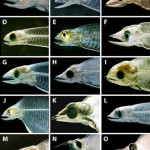
This begins a new series here at DSN. With the addition of Kevin, we are filled to the gills with all deep and biology. This allows me to pursue some other interests of mine. I get really excited about all manner of mechanical things. I have very fond memories of the 1967 Ford Fairlane with a 289 V8 that I drove and loved like a member of the family. I enjoyed spending time with my father as a kid as he worked on a series of old cars. Indeed, those times infused we with continued interest in how things work, not to mention some floral language.

In the first installation I discuss the Halibut, a rather secretive member of the US fleet responsible for a variety of top secret missions throughout the Cold War. The USS Halibut (SSGN-587) was launched in January 1959 from the Mare Island Naval Shipyard, Vallejo, California. Her first distinction comes from being the first submarine in the world designed to launch guided missiles (five Regulus missiles) in addition to 6 torpedos. At 350ft in length, a beam of 29ft, and draft of 28ft, she was a big submarine for the time. Originally she was to be outfitted with diesel engines but was finally fitted with an S4G reactor that drove twin props. The Halibut could hold a compliment of 88 with 9 officers. Integral to her design was internal hangar that would later prove useful for other tasks. Broad in The Universe Below describes the Halibut as “snake digesting a big meal” because the hangar caused a sizable bulge in her hull.
 After six uneventful years serving with the Pacific Fleet, the height was a demonstration of her missile launching capabilities, she returned to Pearl Harbor Shipyard and underwent extensive modifications. She was re-designated SS(N)587 and assigned in 1966 to the Deep Submergence Group, involved in deep sea search & recovery. From here, her life was about to get more interesting.
After six uneventful years serving with the Pacific Fleet, the height was a demonstration of her missile launching capabilities, she returned to Pearl Harbor Shipyard and underwent extensive modifications. She was re-designated SS(N)587 and assigned in 1966 to the Deep Submergence Group, involved in deep sea search & recovery. From here, her life was about to get more interesting.

In dry dock, the floor of the internal hanger was opened fitted with a doored well that penetrated the hull. Winches, spools of cable, and top-secret spy gear and cameras to be lowered through this new well were also added. To ensure the Halibut could maintain a precise position, “maintain station”, she was also fit with additional thrusters. By lowering gear from a submersible as opposed to top-side ship, operations on seafloor could be carried out in secret. At this point, the Halibut took off to locate lost Soviet ships and subs. In 1968, a Soviet nuclear sub (Soviet submarine K-129 (Golf II)) was lost in the North Pacific. The Halibut was sent to hunt for the sub, with the mission so secretive that only the captain and executive officer knew what they were searching for. Using a camera and lights lowered by cable into the depths below the Halibut, after many months the Soviet submarine was located. Little is known about what was recovered from the Soviet sub or the exact nature of the mission. But as Broad points out “the Halibut’s actions were deemed so significant that the Johnson White House bestowed upon the spy sub a much-coveted Presidential Unit Citation for ‘exceptionally meritorious service’ in a secret operation of ‘great military value to the Government of the United States’.” The location of this sub eventually lead to “Project Jennifer” to retrieve the submarine in the summer of 1974, using the purpose-built ship Glomar Explorer.

The Halibut’s next missions, along with her Deep Submergence Rescue Vehicle (DSRV’s) siblings, was to attach a series pods on Soviet undersea cables that transmitted communications of the Soviet Fleet (Operation Ivy Bells). The pod wrapped around the cable and recorded onto tapes any sounds transmitted through the cable. DSRV’s were needed to retrieve and replace these tapes.
According to Wikipedia…
She was mothballed to Key Port/Bangor, WA in 1976 and subsequently stricken on 30 April 1986 and disposed of by Puget Sound Naval Shipyard, Bremerton, WA submarine recycling on 09 September 1994.
More pictures of the Halibut here and more on her story here.






Oh Oh! You have to do the Turtle!
Along a similar vein, in the New York Times last weekend they had an article about a secret cold war mission to map the floor of the arctic and Siberian continental shelf.
http://www.nytimes.com/2008/03/18/science/18arctic.html?ref=science
It’s based on a book that i want to read.
Cheers.